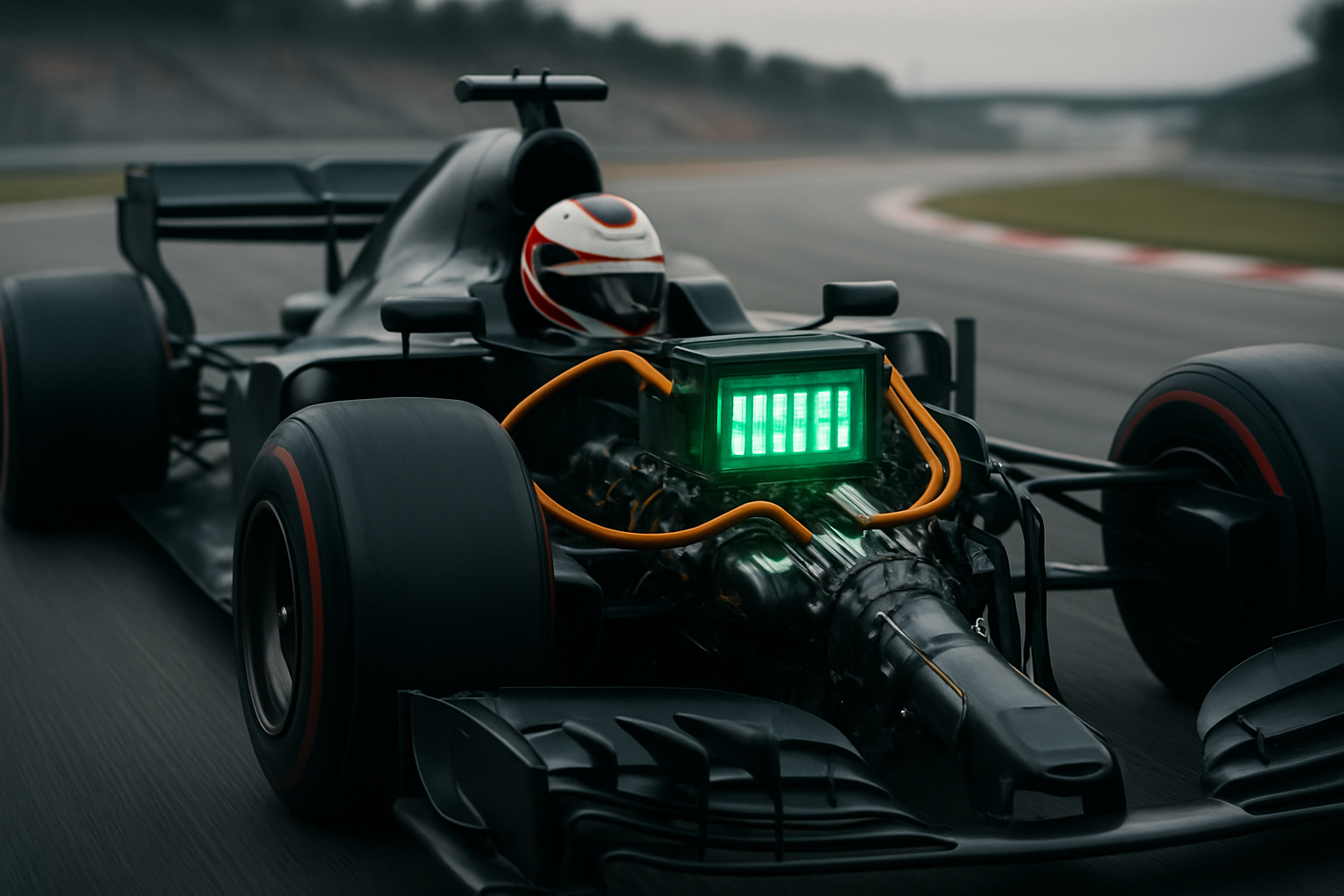Kinetic Energy Recovery Systems: Revolutionizing Motorsport Efficiency
In the high-octane world of motorsport, every fraction of a second counts. Engineers and designers constantly push the boundaries of technology to gain that crucial edge. One innovation that has transformed racing in recent years is the Kinetic Energy Recovery System (KERS). This groundbreaking technology not only enhances performance but also brings a new dimension of energy efficiency to the track.

The Genesis of KERS
The concept of recovering kinetic energy in vehicles dates back to the early 20th century, but it wasn’t until the 21st century that the technology became viable for high-performance applications. The Federation Internationale de l’Automobile (FIA) introduced KERS to Formula 1 in 2009, marking a new era in motorsport technology.
Initially, teams struggled with the added weight and complexity of the systems. However, as the technology matured, KERS became an integral part of racing strategy. The ability to store and deploy additional power on demand added a new tactical element to races, allowing drivers to overtake or defend their position with carefully timed boosts.
How KERS Works
At its core, KERS converts kinetic energy into electrical energy during braking, which is then stored for later use. There are two main types of KERS: electrical and mechanical. Electrical KERS uses a motor-generator unit connected to the driveshaft. During braking, this unit acts as a generator, converting kinetic energy into electrical energy stored in a battery or supercapacitor.
Mechanical KERS, on the other hand, stores energy in a flywheel. As the vehicle slows, the flywheel spins up, storing rotational energy. When the driver needs a boost, this energy is transferred back to the wheels, providing additional acceleration.
Impact on Racing Performance
The introduction of KERS has had a profound impact on racing dynamics. Drivers can now unleash an extra 80 horsepower for several seconds per lap, providing crucial overtaking opportunities or defensive maneuvers. This additional power has made races more exciting and unpredictable, as drivers must strategically decide when to use their KERS boost.
Moreover, KERS has improved overall lap times. The system’s ability to provide extra acceleration out of corners has shaved precious tenths of a second off lap times, pushing the boundaries of what’s possible on the track. Teams have had to adapt their race strategies, considering factors like energy management and optimal deployment timing.
Beyond Formula 1: KERS in Other Motorsports
While Formula 1 pioneered the use of KERS in high-level motorsport, the technology has since found its way into other racing categories. Endurance racing series like the FIA World Endurance Championship have embraced hybrid systems that incorporate KERS-like technology, allowing teams to balance performance with fuel efficiency over long races.
In rallycross, where short, intense races are the norm, KERS has provided drivers with an additional tactical tool. The ability to deploy a burst of power for a quick start or to navigate a tight corner has added an extra layer of excitement to this already adrenaline-fueled sport.
Challenges and Future Developments
Despite its benefits, KERS is not without challenges. The added weight and complexity of the system can affect vehicle handling and reliability. Teams must carefully balance the potential performance gains against these drawbacks. Additionally, the cost of developing and maintaining KERS technology can be prohibitive for smaller teams or lower-tier racing series.
Looking to the future, motorsport engineers are exploring ways to enhance KERS efficiency and reduce its drawbacks. Advancements in materials science and energy storage technology promise to make KERS systems lighter, more compact, and more powerful. Some experts predict that future iterations of KERS could recover energy from other sources beyond braking, such as exhaust heat or suspension movement.
KERS and Road Car Technology
Perhaps the most significant impact of KERS extends beyond the racetrack. As with many motorsport innovations, KERS technology is finding its way into road cars. Many hybrid vehicles now use regenerative braking systems inspired by KERS, improving fuel efficiency and reducing emissions in everyday driving.
This technology transfer showcases the vital role motorsport plays in driving automotive innovation. As KERS continues to evolve in the high-pressure environment of racing, we can expect to see even more advanced energy recovery systems in future road cars, contributing to a more sustainable automotive future.
Conclusion
Kinetic Energy Recovery Systems have undoubtedly revolutionized motorsport, bringing a new dimension of performance and efficiency to the track. From its early days in Formula 1 to its widespread adoption across various racing categories, KERS has proven its worth as a game-changing technology.
As we look to the future, the continued development of KERS promises not only more thrilling races but also significant advancements in road car technology. This symbiosis between motorsport innovation and everyday automotive engineering underscores the importance of pushing technological boundaries on the racetrack. In the end, KERS stands as a shining example of how the pursuit of speed and efficiency in motorsport can drive progress towards a more sustainable automotive future for all.




